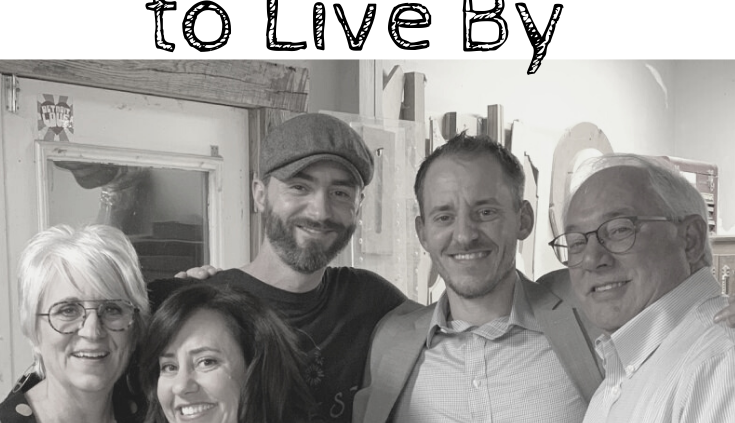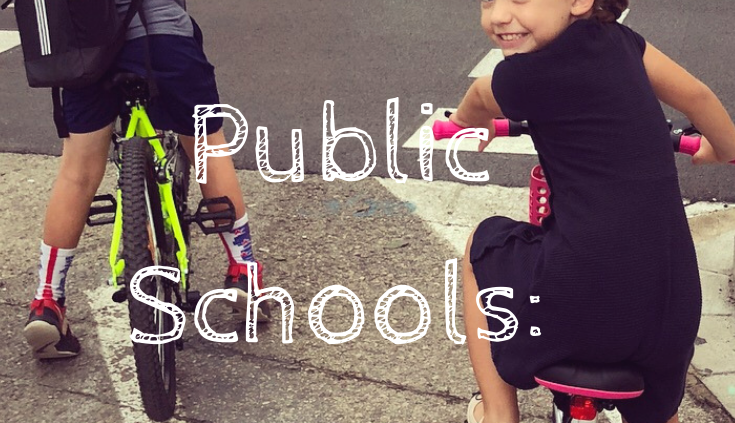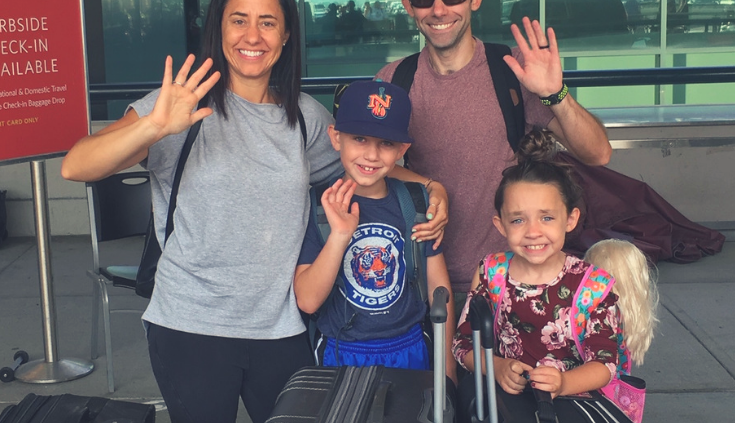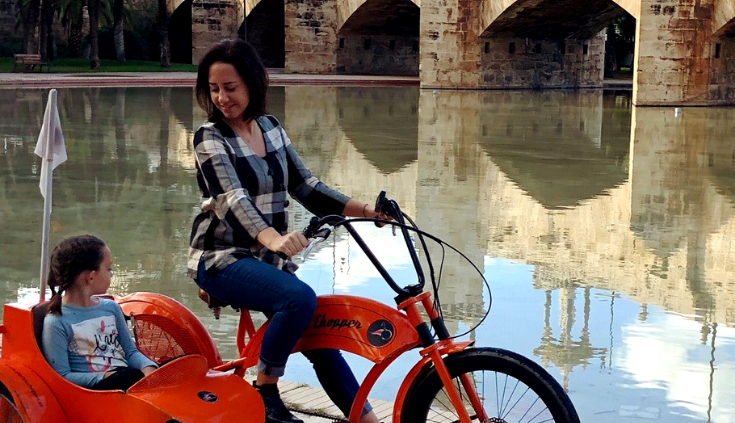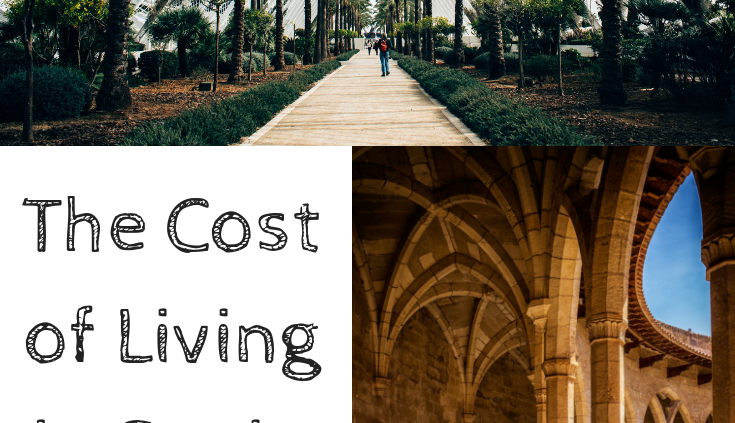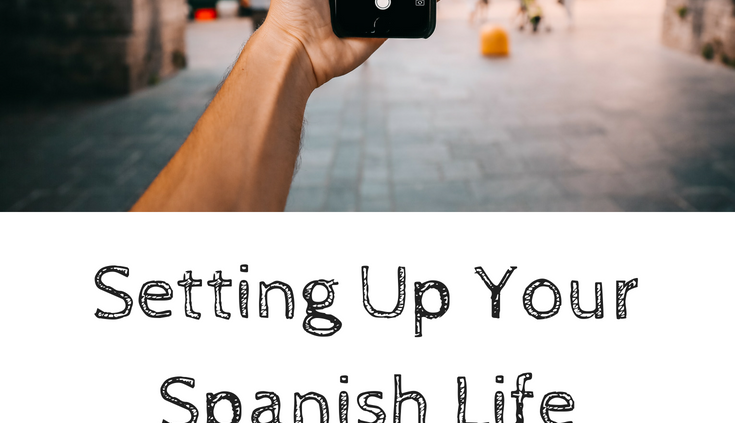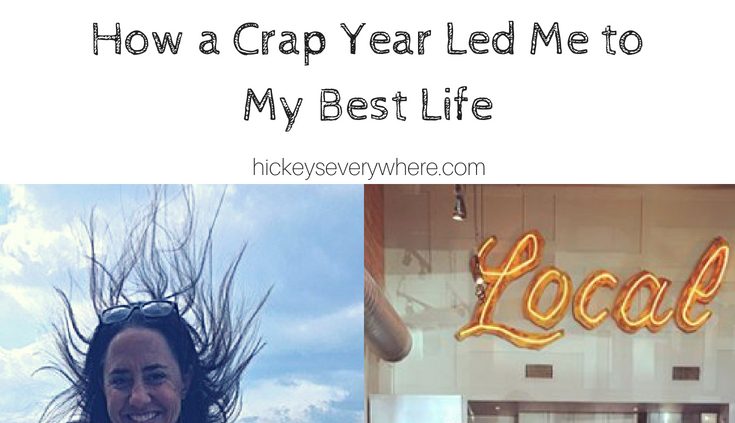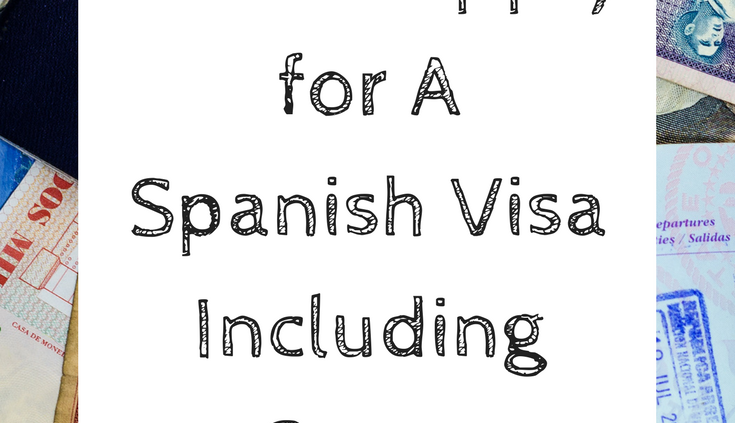“You’re so lucky”. Lots of people tell us that. The truth is, luck has played no part in our move abroad. In fact, I find myself a little frustrated. Luck?! You think the Spanish Sangria fairy visited me in rural Tennessee and flew us over the Atlantic?
On the contrary, we worked really hard and planned a lot to make this move a possibility. We took risks, prepared our employees and clients, broke tough news to families and friends, applied for visas, scouted out a city, poured over budgets, sent a million emails, read books, scoured blogs, sold our stuff and our home. It took us almost 18 months of planning and preparation. That wasn’t luck. That was teamwork.
Luck is defined as “success or failure brought by chance rather than through one’s own actions” and everything we did to get our family here was a direct result of our actions.
We still work to sustain our lives here. We both literally work 9-5 at our home office or coffee shops and sometimes, because of the time change, we alternate working “second shift” taking calls from 5-10pm here (10am – 3pm CST) as most of our clients are stateside while the other person takes after school kid activities and dinner duty. We run a digital marketing/web design agency called Data Driven Design. We have 8 employees and their families that depend on us and our small team is like family. If you’re familiar with small business, you know the grind.
To be clear, I’m not complaining. I’m just telling you that this is the picture we don’t post: Laptops open, faces aglow, kids asleep, as we check in on the business and our work family. We wouldn’t have it any other way. The long nights mean we can afford tomorrow’s adventure:)
Some days here are a real struggle though. To fit in, to learn the language, to do homework with foreign math formulas, to navigate health and public systems, to eat dinner between the hours of 9 and midnight, to encourage the kids to try new things when a new country has already pushed us to the edge of our comfort zones. Simple things like finding bed sheets take way too long and I’m still searching for a decent taco.
So I’m writing this post because I want to encourage all the people that told us, “I’ve always wanted to do that” and say to them: you CAN. It’s just planning, research, work, and mainly – priorities. This was a dream that became a goal that turned into a plan. So my follow-up question is: “What are your priorities?” If it’s comfort. Abort mission;)
Some people are reading and still shaking their head. But my job doesn’t allow for this? However, I’ve met all sorts of expats here with lots of different stories, and NONE of them involve a turn-key “work transfer”. Each and every person we’ve encountered has a unique and interesting backstory. I love learning all the paths that led them here and meeting this exotic breed of hard-working and optimistic adventure seekers.
Some have chosen to dip into their savings early, downsized to afford a pay cut, retired here, worked to play gigs on the international music scene, sold their house to afford life here, supplemented income by tutoring, started an online store, consulted from afar, and all sorts of other clever ways of making money to make life abroad work.
For us, it was a combination of choosing a small 800 sq. foot apartment and getting rid of our cars. Read more about our cost of living here. Our life here is much more affordable in Spain and leaves us money to travel and make memories.
I realize this is not for everyone. I just hope that for those of you on the fence, you realize it’s a viable option.
And for those of you who think “you’re so lucky”, I’ll know you really mean “good for you” or a similar sentiment.
Thanks for reading amigos. Dream big and good luck you got this!
Kate
I’m ‘baring all budgets’ in this post to let you know that if money is your biggest obstacle to moving or traveling extensively abroad – you’re about to get real pumped!!
Before we made our decision to move to Valencia, Spain my husband and I had to crunch the numbers and I tirelessly scoured for blogs and information about the cost of living in Europe. The problem is that everyone has a different idea of “cheap” and “expensive” as those are relative terms. I couldn’t find an answer to this that satisfied my need to know “how much will this cost?!!”
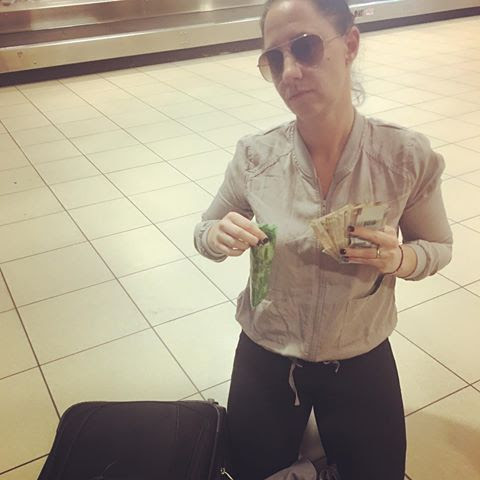
Your girl Escobar almost forgot to take her coca leaves (for altitude sickness) out of her bag at the airport in Peru! #lockedupabroad
In order to make this blog post purposeful and informative, I’m just giving you the actual numbers. How can you make a life decision without knowing the costs?
This is a transparent look into our finances but I’m so passionate about sharing it and documenting it for 3 important reasons:
1. I showed this spreadsheet to my kids (ages 7 and 9) so that they can understand what life costs. It brought about really great questions and important learning for them.
2. Our priorities as a family are to do things together and those travels and adventures cost money. If we want to go out to dinner, a movie, and buy popcorn – we can’t ALSO go on vacations. Now the kids have some ownership over our money-making decisions and are learning to prioritize with us. See here how they chose to address Christmas gifts this year:)
3. You can do the things you want to do in life if you prioritize them. Our apartment is small but in the heart of the charming old town (cue House Hunters Voice over chick), we don’t fill it with stuff, and we walk everywhere.
So without further ado. Here’s the cost of our life in Spring Hill, Tennessee – where cars and square feet abound:
TENNESSEE
$2000 House (4 bed/2.5 bath)
$900 2 Cars
$ 360 Health Insurance
$135 Car Insurance
$100 Boxing Membership
$135 Burn Workout Membership
$300 Gas for Cars
$230 2 Cell Phones
$60 Internet
$60 Electric
$60 Gas Bill
$40 YouTube TV TOTAL: $4,380
VALENCIA, SPAIN
$110 US Phones (we kept these for business purposes)
$1100 Apartment (2 bed/1 bath)
$50 Internet
$50 Soccer Team
$330 Health Insurance
$175 Bank: “Managed Treasury” in Nashville (The bank receives and deposits our US checks)
$15 Sabadell Spanish Bank Account
$25 2 Cell Phones
$80 Electric
$22 Gas
$ 240 Language Class (2 people 3 hrs/week) TOTAL: $2,197
So – how’s my dirty laundry smell?
Now you fully understand “how we afford that”.
As you can see, our European dream is LITERALLY half the cost of our Tennessee life. I promise you that I didn’t make these numbers up to come to this. Of course we had start up costs like buying bikes and locks, new bedding, the visa applications (see visa costs here), realtor fees, and the plane tickets to get here. But these start-up costs will balance out as we save money over the next months.
I have not included food in this breakdown. Some people eat out a lot and others cook at home. I left this off as each family is different and this cost is a variant that you can calculate for yourself using a really clever site called Numbeo. This site allows you to compare the cost of living in cities all over the world. Numbeo has prices broken down into categories like common grocery items, healthcare, transportation, and gives price comparisons on everything from domestic beers to McDonalds meals. They also take a look at crime, traffic, and quality of life. Here’s a Numbeo screenshot comparing Valencia, Spain and Nashville, Tennessee.

A reminder that if you choose private schools, most are located in the suburbs and require transportation. That is a budget game changer. We chose public schools – read what’s best for you in my blog on the subject here.
We wanted 3 things out of this move: For the kids to speak Spanish, to travel and bond as a family, and to have a better work/life balance. Our monthly budget reflects those priorities.
For some of my former high school students reading this (over 1,300 of you!): I hope that you write out your monthly spending then write out your life priorities/goals. Compare lists. Make adjustments. I think that most adults will tell you it took them too long to do this and if you can do it early on in life – you’ll be more fulfilled.
If you have any questions – reach out. I hope your family budget reflects what’s most important to you. It’s never to late to start! $uerte amigo$…

Max and his teacher Gema the day before school started.
As the mama bear, this was really all I could think about. I was SO nervous about my kids daily life and the decision around the right school for them. I will tell you now – this was the scariest part of the move that turned out to be (I’m writing this on their 12th day of school) just fine. Not to say I didn’t bawl at drop off on day 1. My kids are newly 7 and 9 years old. I think that each child is different and each age presents unique challenges. You know your kid, your comfort levels, and you’ll pick the right school.
There are 3 types of schools in Valencia – and the whole of Spain: Public, private, and “concertado”. Ultimately, we chose public schools and I’ll tell you why:
PRIVATE SCHOOLS
THE BAD: They’re expensive!! High enrollment fees and expensive monthly payments. We had the money but we didn’t want to strap ourselves and not be able to travel in Europe. Also, private schools are usually conducted in English and our biggest reason to move here was to have the kids immersed in the language. We knew that they wouldn’t be pushed to learn Spanish as fast in a private school.
Finally, and our last straw – they are all (but one) in the outskirts of town. This means that we would need a car OR they would take a bus, with a hefty price tag, and this would make for a very LONG day. Pick up around 7:30am and drop off around 5:30pm.
THE GOOD: The education and facilities are great! Most public schools – not so much. Also, there are still opportunities for language acquisition as your kids will be with lots of Spaniards, learning Spanish on the playground and in social settings. The quality of education will likely be a bit better. If your child is a superstar or perhaps of middle-school age, already fluent in 2 languages, etc – you’ll want them to keep a high-caliber curriculum. We just wanted our kids to be loved, supported, and immersed so we weren’t really big on a challenging curriculum/tons of homework.
You will probably be with like-minded expats and well-to-do families. This didn’t matter to me much but I think you might want to consider your social scene as it’s a big part of your life.
If you want to have language choices that you select (minimizing Valenciano, maximizing Castellano, etc) you can make those decisions with private schools.

Biking to school on the first day.
PUBLIC SCHOOLS
THE GOOD: They are local, so if you enroll early enough (in May) – you’ll be a short walk from school…which is important as you might be going there 4 times a day because of siesta. Although, we choose to keep our kids in school all day – even during the long lunch break/siesta so that they can play with friends.
They will be completely immersed in the Spanish language. Most teachers don’t speak English at all. This seems scary but it will quickly become normal and your child will adapt. I’m watching my kids grow EVERY day and it’s incredible. Also, they’re free! Lunch is around 4 euro a day and you have to buy books, but that’s it.
THE BAD: The facilities are not glamorous – especially compared to US standards. Some don’t have playgrounds, most are old buildings, and there are no frills.
The enrollment process is more involved and it’s hard to get into schools when you first arrive. The Spanish school system is based on points. You get points for being registered with the government (but everyone has those), points for being an alum (that doesn’t help ex-pats!), points for where you live, and points for siblings going to the school. It’s a bit tough to navigate the Spanish bureaucracy and school is no different. We stayed patient and we had help from a friend with this so it wasn’t too bad. If you arrive after May – you better be standing outside the school in early September ready to beg to get your kid in school – IF there’s space. *My kids are in two different schools because there wasn’t room.
CONCERTADO
THE GOOD: Concertado is the Spanish form of charter schools. They are usually Catholic and there is usually about one concertado per every 2 public schools. There isn’t a huge difference between concertado and public schools – only the religion. It really depends on the one you choose and what’s close to your house.
THE BAD: They are hard to get into, just like public schools. They cost but it’s a very nominal fee. Only 20% of what a private school per year.
The hard part is – you can’t pick a school before you pick a house! It’s frustrating but if you time it right – get your visa by May and have your apartment picked by then as well. May is when the schools open up their extra spaces and they fill up quickly. If you enroll your kids in May you can “relax” and enjoy a LOOONG summer with the kids getting acclimated/traveling. If you’re more adventurous or inexperienced (like us): Arrive in August and the MINUTE that school’s open in September – be standing there with all your paperwork ready to enroll. That landed us in 2 different schools and only a 15 min walk from our apartment, but it was a bit of a gamble.
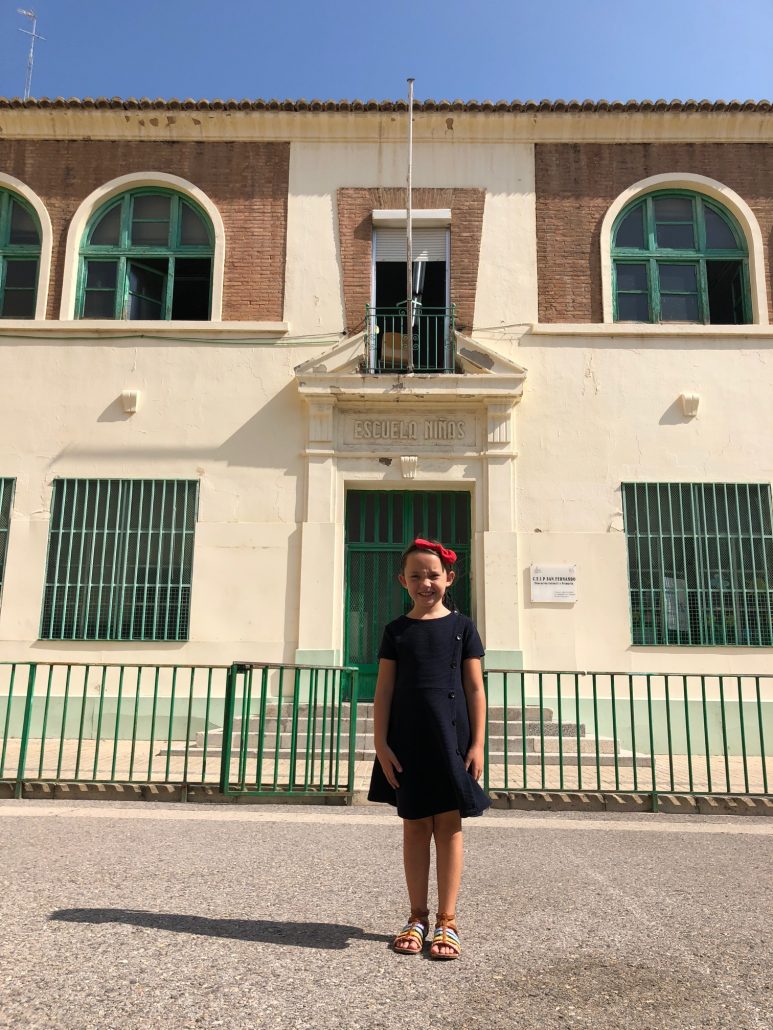
Sam in front of her school before starting segundo grado primaria
For our family, the first year is about language acquisition – not stellar instruction. It’s about learning new norms, meeting new friends, and learning to deal with change and a new language. Your kids will do great wherever you send them. They are braver and much more formidable than you. Have faith in them and try not to impose your fears on their malleable little minds. Best of luck and let me know if I can help you in any way.
You got this!
Kate
Great list of private schools in Valencia here.
Another super helpful resource for schools/links: Moving2Valencia
Before arriving, I thought our first week would be stressful and I would be in a constant state of loser-tourist-map-holding. I am the worst with directions.
I was so wrong! It was an exciting and invigorating week. The kids were in awe of everything, people were so accommodating with our shotty Spanish, and we had a blast walking everywhere and building our stamina for our new pedi lifestyle. If you’re nervous about getting everything together – don’t be – it was easy and fun if you pace yourself and remember that from 13:00 – 15:00 you HAVE to chill at home because nothing will be open….siesta lifestyle baby;)
BANK:
Pretty easy: Email Maria Luisa Soto Torres at Sabadell to set up an appointment. She will respond very quickly and she speaks English and has lots of experience with Brits and Americans alike: SOTOMARIALUISA@bancsabadell.com. There are many Sabadell bank branches but her address is Avenida Cardenal Benlloch, 11, Valencia 46021 and all you’ll need is a passport. You need the bank to be your first step as you will not be able to get a cell phone without a Spanish bank account.

Thanks Maria for the heads-up on the Valencia vs. Madrid game at Mestalla. ¡Viva Valencia!
Some people will tell you that you need a NIE card or NIE number (which comes in your Spanish visa while you are stateside before the NIE card which you will have to get in Spain) – this is not true. Bring it if you have it, but it’s not necessary to open the account. You don’t need a lease either, just a passport.
You will pay your landlord, cell phone, and likely your utilities using your Spanish bank account so be sure to save or pass along your “IBAN” number once you receive your account info. We got a debit and 2 credit cards with our account and the account itself costs 30 euro quarterly. We want to use the debit so that we’re not nicked every time we withdraw from a foreign bank but we won’t be using our Spanish credit card as there are no reward points like with our CapitalOne Visa from the states. However, there is no interest on the credit card so it’s personal preference really.
Sabadell has a lot of partnership banks so you’re able to use most ATMs in Europe for free – as long as you withdraw over 60 euro. Just to name a few: CajaSur, Caixa, and Bankia.
I can’t say nice enough things about Maria Luisa at Sabadell. She sat down with us for 45 minutes, gave the kids sticker pages, and even called City Hall for us. She helped my hubs and son get tickets to the Valencia C.F. futbol game too. Such a sweetheart. She will answer your emails right away.
CELL PHONE:
There are lots of great cell phone options. Pepe Phone is very affordable and our landlord uses them for our internet which is lightning fast. Their plans are around 20 euro per line per month. We went to VodaFone and are currently paying around 60 euro for both phones with great data/minutes. They also provide streaming TV channels if that’s your bag.
You will need to bring a bank account IBAN number as well as your passport. Likely, do not expect to walk out with your new phone as the phone company will need to verify your information and that takes around 24 hours, so choose a branch that is close to where you live. We completed the whole process in under an hour. You can choose to lease a new phone through the cell company (paying every month) or they will just give you a SIM for a phone of your choice.

Of course we had to figure out what the heck a “fartons” was (donut) and try some local horchata at the market. Churros and chocolate? ok. That too.
So how did I find lil Miss Spanish Maria Luisa at the banco? Facebook! Definitely join a Facebook Expats group if you haven’t already. It’s great to get ideas of places to eat, local things happening, and to find out who’s trying to rent an apartment with a doberman and 29 euro…eye roll. Very important: Take the “advice” with a grain of salt. So much of it is one person’s ill-prepared experience, is very outdated, or is something that happened to someone’s cousins, grandma’s friend.
So that’s where we started, one thing each day. Of course, contact me with any questions and I’m happy to help. If you’re stateside and thinking “omg. too much to deal!!” No worries just bookmark this and re-read this when you’re actually in Spain… “tranquila amiga” 🙂
Before we move to Spain and I post glamorous pics of vacation and myself eating churros and sippin‘ Cava – let’s get really real for a minuto. 2017 was really shitty for me. If I’m going to post real advice and real travel inspiration, I would like to get this out in the world for someone that may need it.
I was a teacher for 10 years. I LOVED teaching. It was my calling. I needed a change/challenge so I moved from a non-conventional school to a traditional school. I hungered for more so I taught a new curriculum. That was awesome but I wanted more so I got my leadership licensure to become a school administrator. With a young family, I knew that path was too demanding so I decided to abort. I was burned out of teaching. I felt stuck.
Teachers work SO hard and have SO many skills. We are salespeople to the hardest buyers, we are negotiators with parents, masters of preparation, time manager extraordinaires, and public speaking magicians. Teachers are the sh*t. Good teachers are straight from heaven’s gates. However: We is tired, we is broke, we is burned out. Also, our skill set doesn’t translate to the corporate world. This was my 2017 realization.
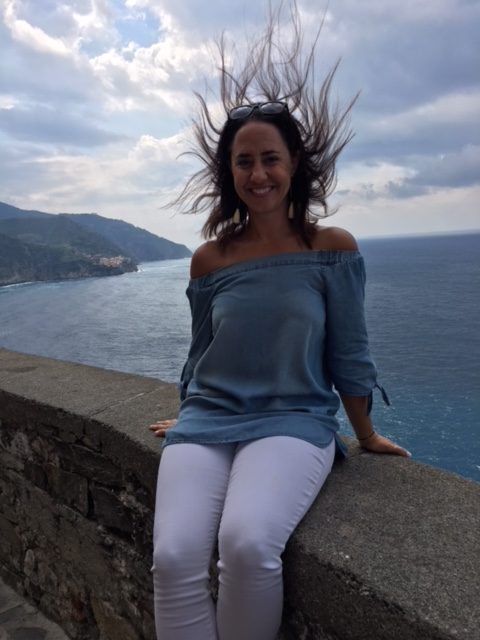
2017 had me lookin’ like this. A hot mess. These are the pics we take before the ONE good one. Remember that when you scroll through your social media feeds. Because I am baring it all, I decided to post the fugliest pic I could find.
I wanted to try anything that wasn’t teaching so that I could get experience under my belt and make a transition into something else down the road. I didn’t want to be picky because I knew that this would be my gateway drug to the good stuff later. I’ll won’t bore you with the details but I’ll just give you the rejection score card real quick:
1. Administrative Assistant – REJECTED. Over-qualified?!! WTAF. I just wanted to sit there and not have 1,006 kids up my ass while I developed a bladder infection for holding my pee. I wanted something mindless and heartless so that I could focus on my own kids and not everyone else’s. After 2 long and seemingly hopeful interviews, boom. Rejection #1 – I cried in the school parking lot.
2. Grant Writer – I love to write! Yes! This was a total hook-up from a revered colleague and I was lucky enough to be one of the 2 finalists. This was a new path that was challenging but do-able. I BLEW it because of my indiscretion and lack of attention to detail. This was keep-me-up-at-night gut wrenching pain.
3. Kinesthetic Educational Development – I always believed in movement in the classroom and exciting and engaging lessons. This company had me geeking out. I just kept thinking “this is SO me!!” A friend hooked me up by passing my resume along. I didn’t even get an interview. I stalked them for over a month and my rejection came in the form of a slow IV drip.
I applied for non-profit jobs that looked meaningful, corporate jobs that looked dumb, part-time jobs that would require major family budgeting, and a whole slew of other jobs I can’t ever remember. I put a lot of hours into starting a consulting business that still might be a fun endeavor at some point. Each time – new resume, new cover letter, new hope. All to be dashed. Glassdoor.com was my BFF, LinkedIn was always an open browser tab, yet all of my escape plans were vetoed.
Now, before I cue Garth Brooks “Unanswered Prayers”, let it be known that the real MVP in all of this is: my sweet Paul. He supported me through it all and reminded me of the patience I needed to make the next chapter a reality. There were mornings I’d wake him up at 3am because I couldn’t sleep – crying and lost. I’ve always known I needed him to be happy, but I think I discovered through all of this that I need him to breathe. I love you sweets.
Insert the good stuff: THANK YOU GOD for all of that rejection. I had no idea at the time that all of those “no”s and even a loud and painful “hell no” were actually the best things that happened to me all year. None of those jobs were for me. None of those jobs would have been fulfilling. I wouldn’t be moving to Spain to live out our dreams, I’d be formulating another exit strategy. I am so very grateful for all of that heartache. I grew, shed a LOT of bullshit (more than I realized I was carrying around), and my mistakes/rejections were incredible teachers.
So remember that when I post a pic and you’re like…”Must be nice”. It wasn’t without a backstory. The road was paved with rejection. Thank God for rejection. I hope yours comes privately and gently but I doubt it will. Likely it will feel like boulders on your chest but just remember to stay patient. Life changes quickly. “Rejection time” is warped – it always feels much longer than it actually is. Just wait it out and know that eventually you’ll reach the top of the hill, take your feet off the pedals, and coast down the other side. You just can’t see the top of the hill sometimes – so keep pedaling. Likely you’ll have to painstakingly walk your bike up the hill at many points in your rejection journey…just don’t stop.
In 12 months, my life went from the aforementioned shit storm to: I learned how to become a digital marketer, social media strategist, build websites, run social ads, start a blog, apply for 4 Spanish visas, get rejected then do it again, teach at Vanderbilt, sell my house, travel to Europe twice, Denver, Austin, Chicago, Michigan, and move to Spain. Most importantly, I was the best mom in 2017 than I have been since my kids were born. They got my good energy – that alone was worth the heartache.
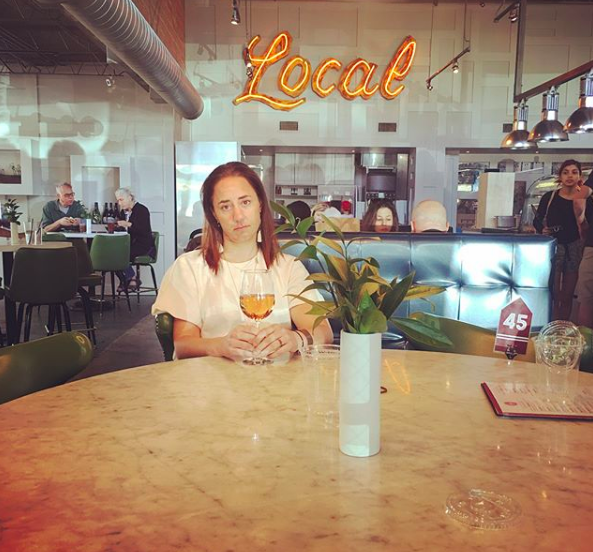
Here I am drinking a lil rejection Rosé after our visas were “unapproved”. 10 business days later, buckets of sweat, and a 2nd trip to the Houston Consulate and we were good to go:) Thanks to KH, KG, and DDD for supporting me through every boring document/detail in that process.
The darkness will only last so long. Eventually it will give way to light. Stay patient…stay positive…keep the faith…and keep a tight circle.
Rejection is the baddest b*tch and so are you.
Thanks for reading and please share to anyone that needs to be reminded of the little gifts that come as “no”s.
P.S. In a fun turn of events: 1 of the 3 rejections turned into two great friendships that I cherish. Another of the rejections (unbeknownst to them) turned out to be a lucrative client and was my first “solo project” which I nailed. Fuggin’ BOOM! LIFE!
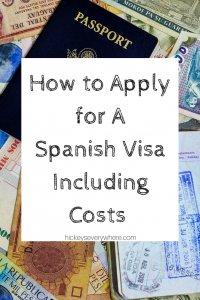 Spain is known for being a bureaucratic paperwork and process nightmare. It’s reputation for rejecting visas and requiring an obscene amount of hoops to jump through proved true and it had me freaking out, at first. I remember looking at the list for the first time and thinking: “I CAN’T do this”.
Spain is known for being a bureaucratic paperwork and process nightmare. It’s reputation for rejecting visas and requiring an obscene amount of hoops to jump through proved true and it had me freaking out, at first. I remember looking at the list for the first time and thinking: “I CAN’T do this”.
I was so overwhelmed. I couldn’t find much information online and if I did, it was outdated. Visas must be turned in at one of the 8 Spanish consulates in the US and because you have to go the the consulate that you are “zoned” for, only one blogger had experience with the Houston Consulate experience. (I live in Tennessee, Houston is my consulate. Check here for yours but note: *the New Orleans consulate closed)
If you are embarking on this craziness – please hang in there! It is not that bad once you get rolling. Also, I would love to help you as I feel like I’ve done a ton of work and I’m more than happy to share and answer any questions you have.
An overview: First, you’ll need to decide what type of visa you’ll be applying for. We are not going to be getting paid by Spanish companies/people as our business is web design and marketing and we’re based in Nashville. This meant that we could apply for a “non-lucrative visa”. There are other visa types that require different paperwork but this is the path that best suited our needs and is a very popular choice for most US expats.
Timing is always a big concern. You’ll notice that a few of the items on the list have to be within 3 months of the application date (medical clearance, FBI check, marriage and birth certificates) so you have to be thorough and thoughtful. If you REALLY wanted to – it is possible to do all of this in a month but you’d have to stay on top of it. I started my process in Jan. and applied in late March. This gave me plenty of time to collect, copy, notarize, and to make mistakes – which I’ll explain here.
Each person in the family needs different paperwork. I served as the primary applicant and these are the requirements for my visa. Anything that is straightforward, I’ve just listed with a link. Any information in italics is my advice for that particular item. I’ve also listed costs here in bold and if there’s no price listed – it was $Free.99!
PRIMARY APPLICANT
- Visa Application Form.
- Form EX-01: Form must be signed and filled out in print. Only available in Spanish.
- Original Passport: Valid passport for a minimum of 1 year, with at least one blank page to affix the visa. Your passport may remain at the Consulate. They kept our passports because we had an “incomplete application” and 10 days to get our remaining paperwork to them OR we had to start over from scratch – oh HELL NAH.
- ID: You need to provide proof of residency in one of the States under our jurisdiction with a copy of one of the following documents: US Driver’s license or US State ID.
- Two recent passport-sized photos: White Background, 2x2in, glued to the applications. $19 per person at CVS for 4 photos.
- Notarized document explaining why you are requesting this visa, the purpose, place and length of your stay in Spain and any other reasons you need to explain, plus certified translation into Spanish.
For this I wrote a 2 paragraph statement saying that we were excited about the language, my son about soccer, culture, and meeting people in Spain. I didn’t make it too long, just kept it to the excitement of moving there to embrace the culture. Be honest and let them understand that your intentions are genuine. I got mine notarized for free at my local bank. One page translation $30
7. Proof of sufficient funds (investments, annuities, sabbaticals, checking and savings accounts statements from the last three months and any other source of income) to live in Spain without working. You must provide last-three-month bank statements of your checking or savings account. The minimum amount required is 25,816 Euros plus 6,454 Euros per each additional family member. You must provide a certified translation into Spanish for all these documents.
**This was where I made a mistake. You must provide the last 3 months of the account that has the sufficient funds. I just did our checking account and it was clear that we had the sufficient funds in our savings that was accounted for on that same statement. However, if you have the bulk of your money in savings – print the last 3 months of that account. Also, if it says “Page 1 of 2” make sure to have that 2nd page. Make sure to get someone at the bank to notarize the print outs. $120 for four page translations
I also printed out our kids college funds and our retirement from online (although we will NOT be touching either to fund our move) Unemployment is high in Spain and they want to know you can afford to live there so show any money you’ve got, anywhere. $120 for four page translations
8. House property or leasing contract in Spain. Contact your realtor for a copy.
9. Police Criminal Record clearance verified by fingerprints and certified translation into Spanish. It cannot be older than 3 months from the application date. FBI Records for international purposes, issued by the US Department of Justice – Federal Bureau of Investigation. They must be legalized with the Apostille of The Hague Convention from the US Department of State in Washington DC. You must also provide a certified translation into Spanish of the Apostille of The Hague.
Alright this is the beast with the most steps. I messed this up at $58 because I used the State of Tennessee. You must get FINGERPRINTED or it doesn’t count. I used this company: Identigo, they were quick BUT be careful – their email will go to your junk folder and my husband deleted it!! Such a pain to recover. Also, you have to have a PC to open their results. uhhh. $100 total for my husband and I – prints only
What is an Apostille – pronounced [ah-poh-steel] Convention of the Hague?! huh. This is easy – it’s French for “certification” and basically is a verification that your local notary is legit. The Apostille of the Hague Convention means that it’s recognized worldwide because our US notaries are not. Your FBI check is not a state issued document, it’s federal, so you must get this done by an Apostille in WASHINGTON!!! This was my second mistake and it was almost a deal breaker when I stood behind the glass at the consulate. I used the company Apostille Please, LLC . Tom runs this company and he answers the phone and email – he was super helpful. Our cost was really high here because we had to do a rush order for our Apostilles. I’m sure it’s much less without the rush but we needed it in 5 days. $300 for 2 Federal Apostilles and $120 for 4 page translations of Apostilles and FBI background checks
Birth and marriage certificates are issued by the state where the birth/marriage took place. For me, those 3 events were all in my home state and I live close to our capitol in Nashville. I drove to get my Apostilles and walked out of the state building in under 20 minutes. If you are not close to your Apostille – I would leave time for this one as they will need to be sent to you and processed by the state. $6 for all 3 documents (2 kid’s birth certificates, our marriage certificate) $90 for translations of all 3 Apostilles.
Let’s review: you need Apostilles from the FEDERAL level and the STATE level. They look like this:

Left is Federal and right is state of TN. Documents are stapled to the back of the Apostilles.
10. Medical Certificate, plus certified translation into Spanish. A doctor’s recent statement (not older than 3 months) signed by a M.D. with doctor’s or medical center’s letterhead. It must indicate the following: ‘the patient has been examined and found free of any contagious or infectious diseases according to the International Health Regulation 2005’.
I printed this Medical form and had a wellness visit already scheduled. I sent the form to our nurse ahead of time they had these ready for us. Double check that it’s on the letterhead and stamped from the doctor. $120 for these translations. (**I wish that I had asked my Doctor to sign in both Spanish and English but I was afraid he wouldn’t sign something he couldn’t read. I played it safe and spent the translation fees here but I could have avoided that by using this form in Spanish and English.) Kicking myself : Part 1 of a 67 part series.
11. Proof of international medical insurance while in Spain, plus certified translation into Spanish.
I used Sanitas for Expats after lots of research. You must pay for your insurance up front for the entire year to show that you won’t drop it and rely on the Spanish free healthcare system (93% of Spaniards use their free healthcare and don’t go private because it’s that good!). This was a bit tricky because Sanitas would not delay our coverage from our March application date to August – when we were actually moving. We ended up delaying the start to May so that was good enough. It was cheaper than our US health coverage and just as good! $287 per month for a family of 4 – paid up front: $3,450 of course this depends on what you elect. We wanted dental and had no pre-existing conditions. No translations here because the proof of insurance was in Spanish. However, make sure that your documents show the “type of coverage” and “validity”. I got nicked here too because I didn’t know what the documents said and Sanitas didn’t tell me (wth’s the angry emoji on here!?)
12. Authorization form M790 C052, plus the Authorization fee. $11 per person
SPOUSE:
All of the above items except #7 and #8, adding:
Marriage certificate (not older than 3 months) authenticated with the Apostille of The Hague, plus certified translation into Spanish. If you can wait, you can have this mailed to you or you can go to the $15 for the certificate copy and $30 for the translation
MINORS:
*prices listed are for ONE minor
1. National visa application form $140 non-refundable visa application fee
2. Form EX-01: Form must be signed by both parents and filled out in print. Only available in Spanish.
3. Original Passport: Valid passport for a minimum of 1 year, with at least one blank page to affix the visa.
4 Two recent passport-sized photos: White Background, 2x2in, glued to the applications. $19 for 4 photos at CVS
5. Birth certificate (not older than 3 months) authenticated with the Apostille of The Hague, plus certified translation into Spanish. $30 for 1 page translation of Apostille, $30 for translation of birth certificate, $15 for a copy of the Birth Certificate, and $2 for Apostille
6. Medical Certificate, plus certified translation into Spanish. $30 translation
7. Proof of international medical insurance while in Spain, plus certified translation into Spanish.
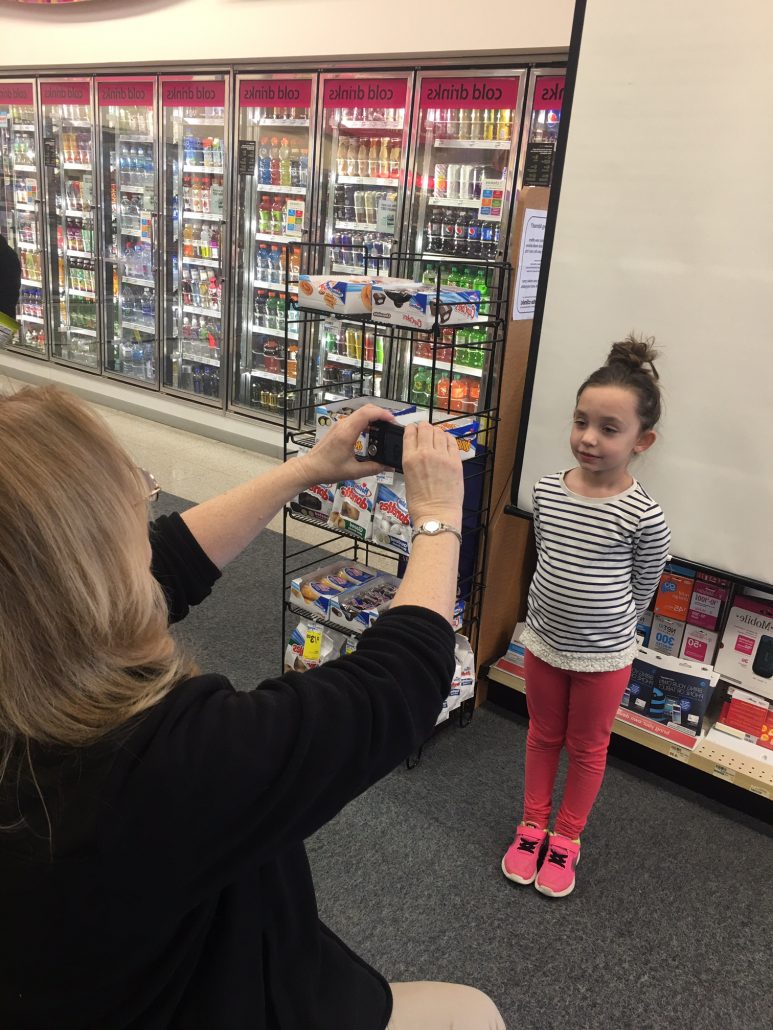
Little Sammy Sue getting her passport photo.
8. Authorization form M790 C052, signed by both parents, plus the Authorization fee. $11 fee at Consulate
COPY and SCAN
COPY. SCAN. REPEAT. You will need to submit the originals of each of these documents and one copy. You don’t want to turn in your only copy so make sure that you make 2 or 3 additional copies of everything. I did my copies in color as some seals were colored and it kept everything looking original.
I also scanned everything and kept all of this neatly organized in the Google Drive with a folder per person. Be sure to title each document well as you’ll be filling these digital folders quickly. Example “Max Birth Certificate. Translated” and “Financials Statement Page 2 of 5 Translated” – I kept everything in the digital folder that coordinated with their actual folder for the consulate and that was a big help in finding things quickly. I don’t recommend keeping all like items together (ie: birth certs and passports because you won’t present it to the Consulate that way)
MISTAKES TO AVOID
I didn’t read the fine print so I had my kids’ birth certificates AND our marriage certificate translated at $30 each not realizing that they had to be “within 3 months of the application date” sonofa….. You’ll have to either pick up these documents new or order them online. They take about 3 weeks to arrive if you order by mail (in TN).
Then I got a State of TN Criminal Background Check for $58 then realized it’s not valid because it didn’t require us to get fingerprints. uhhhhhhh
Again, the fingerprints documentation from the FBI must have an Apostille from DC! Not your state Apostille like the birth and marriage certificates.
Not paying SUPER close attention in the name of “getting-it-done” cost me….$148
Appointments at the Houston Consulate had to be made for each person. Make sure you pay attention to the time zone;) and be sure to schedule each member of your family a separate 15 min time slot: Houston Consulate Scheduling Site.
COST
Grand total for our visa was: $1,787 total for a family of four. (<- in this number, I did not include the consulting or eBook purchase *see below, my mistakes, or the cost of our year of insurance). Again, we had our Federal Apostilles rushed so I know this number would be lower for you if you didn’t crap your pants like me!
AT THE CONSULATE
We brought our whole family because you have to. That was fun like dental surgery. The kids didn’t even need to really be there because they never talked to them. Everything happens through glass and a little bank teller hole which is annoying. I think it’s smart to make an early morning appointment so you can make calls during business hours and get things settled first thing so you can collect anything and maybe even get it back to the consulate that day.
Let’s talk worst case scenario: Your application has missing or incorrect components. They give you a choice: You have 10 business to get the missing paperwork to them via mail (you risk your $500+ in application fees) OR you can take your money and applications back and resubmit. We chose the former.
REFERENCES
Finding a cheap but certified Spanish translation site is tough. The first one I found charged $90 per page!!! Some charge per word. I used The Spanish Group and they were about a 2-6 day turnaround and only $30 a page. If you find cheaper – I’ll be super surprised. I chose the “email and mail” option for each translation so that I had a real signature from the certified translator and that option is free so it was a no brainer.
I bought an eBook from the Wagoner’s Abroad and it helped a lot. There were parts of it that were outdated but he’s a great resource and it came with a downloadable spreadsheet to help you check off each item for each applicant, along with copies, Apostilles, notaries, etc.I used this for a while then aborted and went straight for my physical folders for each family member. Personal preference really. They offer consulting packages and it’s nice to have someone to talk to because NOBODY at the consulate is answering the phone!
I also found Family Life in Spain and they were a great resource on all things moving to Spain as well as Spanish culture, holidays, tips, moving costs, schools, and more.
Another great Houston consulate/visa reference is Big Burton Bon Voyage. Maja Burton went through this process in Houston with 7 children. Seven, you read that right. Siete. She has great info and they went through the renewal process 12 months later in Spain. I read her blog and it was a huge help for us.
I hope this has helped you and if you have any better recommendations, tips, resources, etc. please comment. Fun fact for you: On our scouting trip we met a couple that applied for their “non lucrative visa” and the consulate just thumbed through their application papers lackadaisically like “oh ok great, you’re approved”. HUH!??! Can’t bet on that though;)
¡SUERTE AMIGOS!

